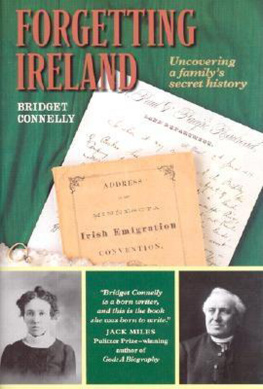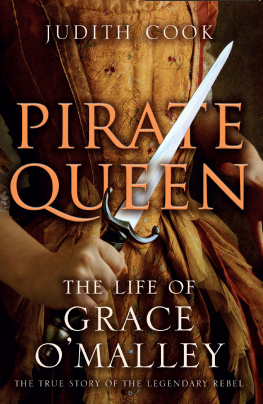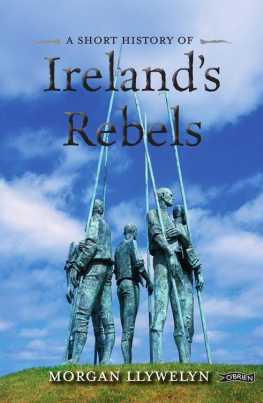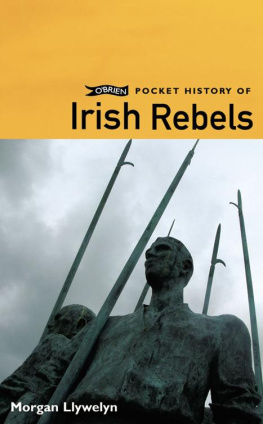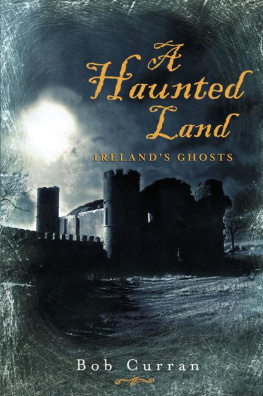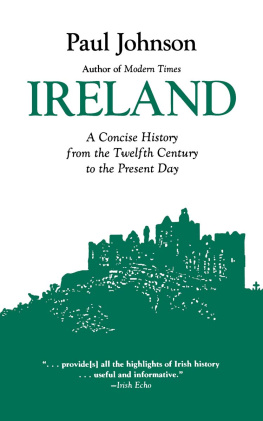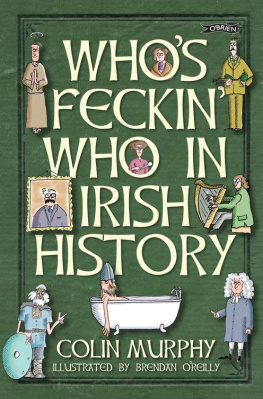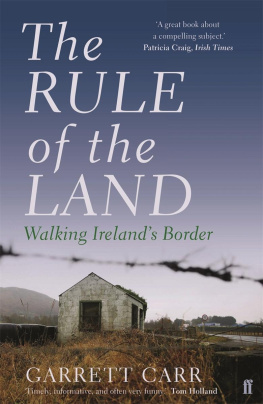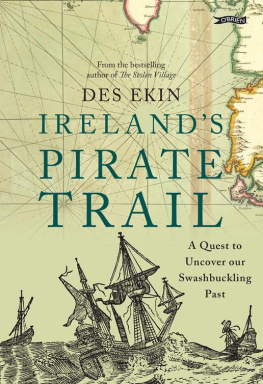
Introduction
There came to me also a most famous feminine sea captain called Granny Imallye and offered her services unto me, wheresoever I would command her, with three galleys and two hundred fighting men, either in Scotland or in Ireland. She brought with her her husband for she was as well by sea as by land well more than Mrs Mate with him ... This was a notorious woman in all the coasts of Ireland.
SIR HENRY SIDNEY , LORD DEPUTY OF IRELAND , 1577
F or centuries the life of the iconic sixteenth-century warrior leader by land and sea, Grinne N Mhille (Grace OMalley) or Granuaile, as she is more familiarly known in Ireland, was abandoned to the vagaries of myth, fiction and folklore. Why this should have happened says more about the negative side of being an icon than it does about being Granuaile. Icons are sometimes dissident, subversive, mould-breaking, radical and, at times, heretical too, often resulting in their banishment instead of their commemoration. Since Granuaile subscribed to all the above traits she thereby paid the penalty of omission.
Like many of her sisters, Granuaile was also a victim of the mainly male orientation of history. But in her particular case more than mere male chauvinism ensured her dismissal from historical record. Irish heroines were required to fit a specific mould, suitably adorned in the green cloak of patriotism, their personal lives untainted, their religious beliefs Roman Catholic. Granuaile, as one of her male detractors wrote of her, a woman who overstepped the part of womanhood, who allowed neither social, political nor religious convention to deter her, did not readily conform to the patriotic, untainted, God-fearing and dutiful picture of Gaelic womanhood promoted by later generations of historians.
There are many aspects of Granuailes life that qualified her as persona non grata in the roll-call of Irish heroes. Born c. 1530, the daughter of a Gaelic chieftain, she already excelled in the traditional seafaring attributes of her familysea-trading to Ireland, Scotland and Spain, with some piracy and plundering on the sidebefore she assumed the more traditional role of wife and mother in a politically arranged marriage. As a wife, however, convention did not deter her from superseding her more reckless first husband in his role as chieftain, or from avenging his death. Neither did it deter her from divorcing her second husband, from taking a lover, from reuniting with her husband who, from Sidneys observation above, would seem to have been content to walk in her shadow. As a mother, much to Queen Elizabeths amazement, she did not hesitate to chastise one son by attacking his castle and driving off his cattle herds when he foolishly allied with her sworn enemy, or from saving the life of her youngest son when her ship was attacked by North African pirates.
When Gaelic law spurned her as a female chieftain, leading by example, both by land and by sea, she endured the same danger and hardship as her followers. Her ability and success rendered the salic code, which debarred women leaders, redundant. Contrary to law, custom and social mores, her daring and charisma made her leader of an army of 200 men and captain of a fleet of galleysthe versatile cargo-cum-plunder-cum-warships of the period.
On the military front she personally led her army on the battlefield against individual English military generals who tried to curb her power, eventually becoming a matriarch, not merely of her own followers and extended family, but of neighbouring clansmen, whose chieftains had either died in the numerous conflicts of the period, or had abandoned their obligations to protect their dependent followers. And her maritime skills gave her role a double edge. It took immense skill and courage to ply the dangerous Irish coastline and the seas beyond.
When the expansionary and colonisation policies of Granuailes great contemporary Queen Elizabeth I of England impacted on Ireland in the last decades of the sixteenth century, Granuailes leadership qualities in the political arena came into play. Skilfully negotiating her way through the Machiavellian web of Elizabethan court politics, she outmanoeuvred many of the most prominent English statesmen of her day. Her correspondence and meetings with such Elizabethan movers and shakers as Lord Burghley, Sir Henry Sidney, Sir John Perrot, the Earl of Ormond, the Earl of Tyrone, Robert Cecil and eventually Queen Elizabeth herself, is evidence of Granuailes political acumen. The inclusion of her name on Boazios map of Ireland of the period confirms her status as a figure of political significance.
Her personal struggle for political prominence, however, mirrored the final struggle for survival of the archaic world that bred and bore her. Sixteenth-century Gaelic Ireland was fragmented and politically outmoded. Inter-clan feuding and divided loyalties against a determined enemy, unified and strong under their female monarch, left every Irish leader to fend for himself. Granuailes principal motivation was to ensure the survival of herself and her extended family in the political and economic chaos precipitated by the Tudor conquest of Ireland.
And she did it with style and panache. In 1593, with a lengthy catalogue of rebellion, piracy and other disloyal activities registered against her at the English Court, bearing the tags nurse to all rebellions for forty years, a director of thieves and murderers at sea, she boldly sailed her galley from her castle on Clew Bay on the west coast of Ireland to Greenwich Palace to negotiate face-to-face with her perceived enemy Queen Elizabeth I . The correspondence emanating from the meeting of these two remarkable women, by then elderly and experienced in the ways of the world, is testimony to the audacity of Granuaile in persuading the English queen to fly in the face of the advice of her own military men in Ireland. Granuaile not only kept her head but ensured her familys future security and her own freedom until her death in 1603.
Yet her role in the history of the sixteenth century was allowed lapse into the realm of folklore and fiction. The Annals of the Four Masters, that seminal source of Irish history compiled a few years after her death and in a place where memories of her activities were still verdant, do not even mention her name. The English State Papers, on the other hand, contain references to her as late as 1627, some twenty-four years after her death. Such bias erased from the pages of Irish history one of the most remarkable women and, in so doing, diminished our understanding of the past. However, it is a measure of her greatness that her memory was preserved by folklore. Legends are not created about insignificant people. To be remembered in folk memory is as much a tribute to, and validation of her status as any academic treatise.
As to the factual evidence relating to Granuaile, it was left to the English administrators and generals who had come to conquer her country, to write her into historical record. And this is where I found her. These Elizabethan artefacts, held in both public and private institutions, are now faded and brittle, their age-darkened, spider-like handwriting evidence of the passage of four hundred years since their authors first put quill to parchment. From the swirls and flourishes of these sixteenth-century relics the story of Granuaile springs to life. And when analysed within the historical context of the traumatic epoch in which she lived, she emerges as a fearless leader, by land and by sea, a political pragmatist and tactician, a ruthless plunderer, a mercenary, a rebel, a shrewd and able negotiator, the protective matriarch of her family and tribe, a genuine inheritor of the Mother Goddess and Warrior Queen attributes of her remote ancestors. Above all else, she emerges as a woman who broke the mould and thereby played a unique role in history.
Next page

